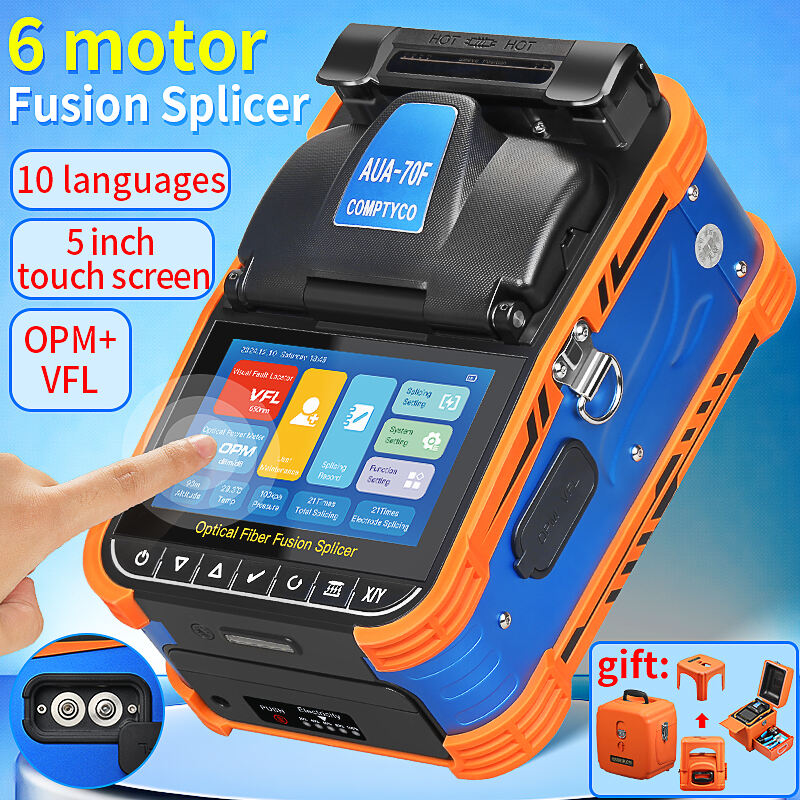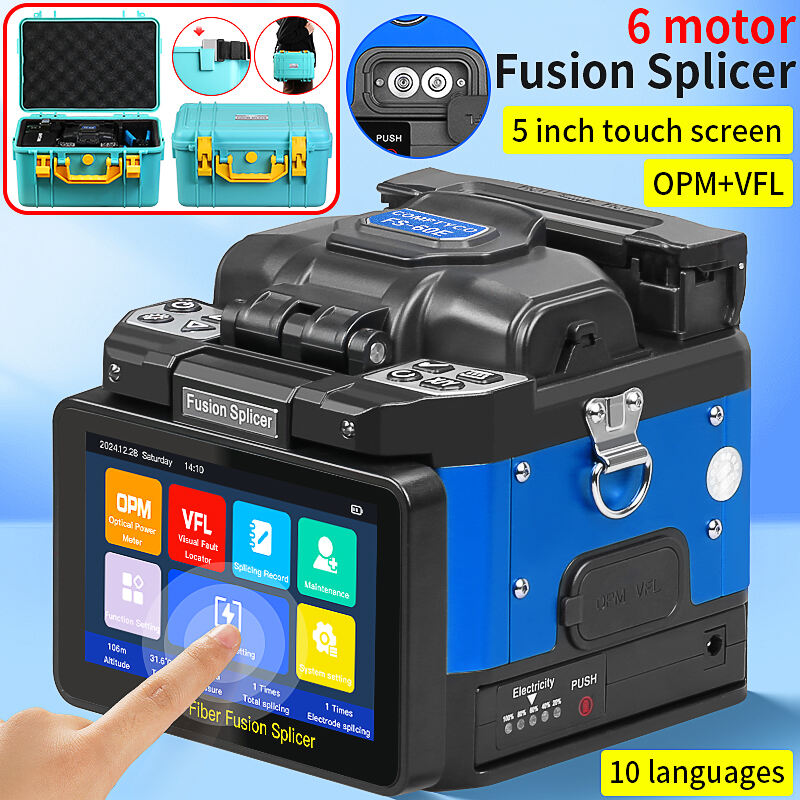optical fusion splicer
An optical fusion splicer is a sophisticated device designed to permanently join optical fibers with minimal signal loss. This precision instrument uses controlled electric arc technology to melt and fuse fiber ends together, creating a seamless connection essential for modern telecommunications infrastructure. The device incorporates advanced imaging systems, typically featuring multiple cameras that provide detailed views of the fiber alignment from different angles. Modern fusion splicers include automated features such as auto-focus, real-time alignment adjustment, and splice loss estimation. The core technology employs precise thermal control systems that generate the perfect temperature for melting and fusing fiber optics, typically around 3,000 degrees Fahrenheit. These devices are equipped with wind protectors and environmental compensation systems to ensure consistent performance in various working conditions. The splicer's operation involves cleaning the fiber, precise cleaving, alignment in multiple axes, and the actual fusion process, all managed through an integrated control system. Applications range from telecommunications and data centers to industrial networks and FTTH (Fiber to the Home) installations. The technology has evolved to include portable models for field operations while maintaining the precision of laboratory equipment.


